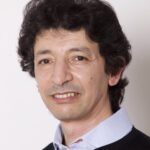Shintaro T. Suzuki & Shinji Hirano (eds.), In The Cadherin Superfamily, Springer, Japan. pp 341-361 (2016)
The exquisite sensitivity and frequency tuning of hearing depend on the correct structure and functioning of the auditory sensory hair cells, the neighbouring supporting cells, and the homeostasis of their ionic environment. The increasing number of adhesion proteins identified as causing hearing impairment in humans and mice when defective is consistent with a critical role for cell–cell junctions between neighbouring epithelial cells of the cochlea, and of fibrous links within the hair bundle, the sensory hair cell structure responsible for sound reception. Classical cadherins and/or associated adherens-junction proteins, such as p120-catenin or nectin 3, have been shown to be essential for establishment of the regular mosaic cellular pattern of the auditory sensory epithelium. Two cadherin-related proteins, protocadherin-15 and cadherin-23, are key components of both lateral links and tip-links in hair bundles; they are essential components of the mechanoelectrical transduction machinery. Studies of the role of these adhesion proteins and of the pathogenesis of the forms of deafness caused by defects of these proteins have provided considerable insight into the development and functioning of the auditory sensory epithelium, and of the hair cells in particular.

